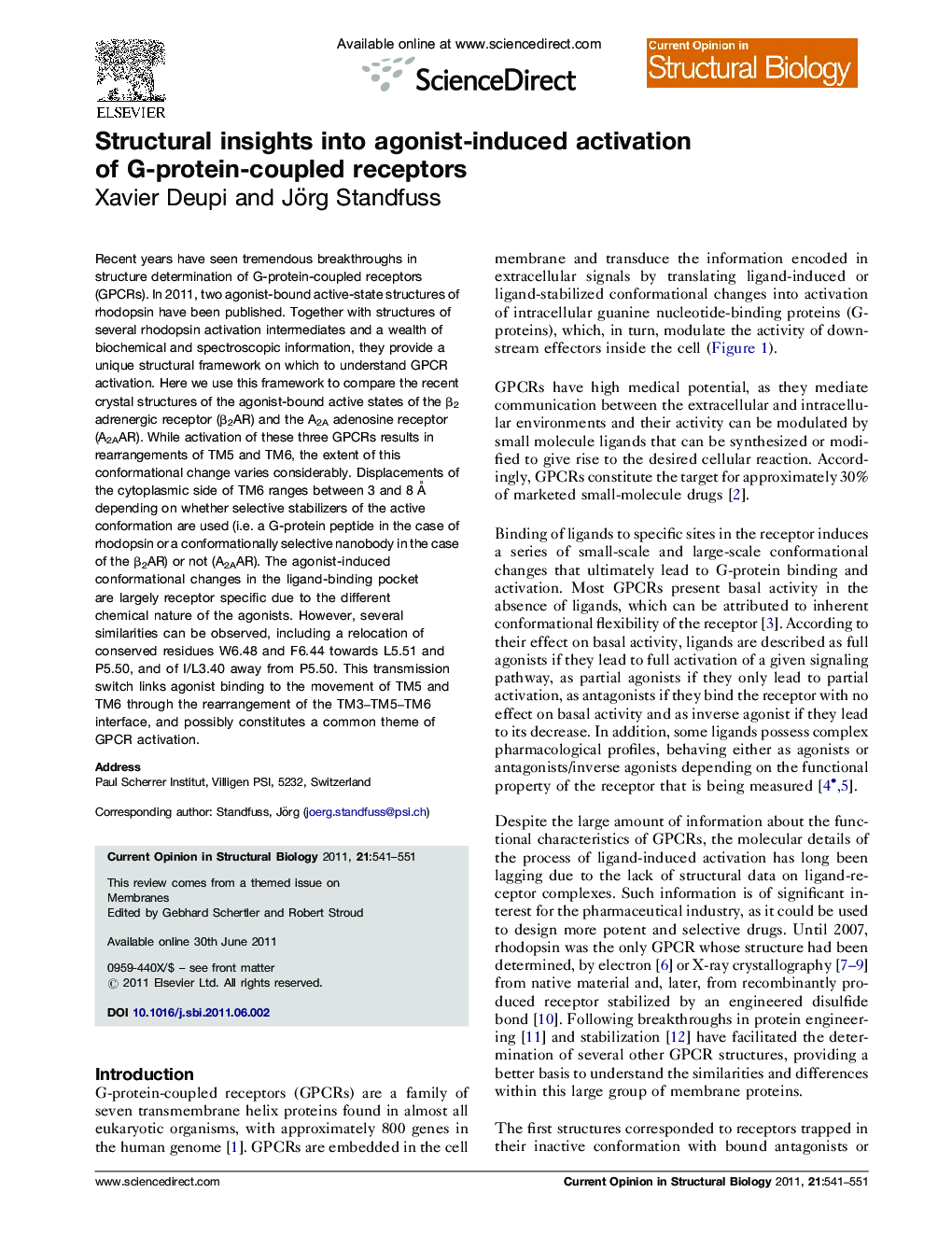| Article ID | Journal | Published Year | Pages | File Type |
|---|---|---|---|---|
| 1979337 | Current Opinion in Structural Biology | 2011 | 11 Pages |
Recent years have seen tremendous breakthroughs in structure determination of G-protein-coupled receptors (GPCRs). In 2011, two agonist-bound active-state structures of rhodopsin have been published. Together with structures of several rhodopsin activation intermediates and a wealth of biochemical and spectroscopic information, they provide a unique structural framework on which to understand GPCR activation. Here we use this framework to compare the recent crystal structures of the agonist-bound active states of the β2 adrenergic receptor (β2AR) and the A2A adenosine receptor (A2AAR). While activation of these three GPCRs results in rearrangements of TM5 and TM6, the extent of this conformational change varies considerably. Displacements of the cytoplasmic side of TM6 ranges between 3 and 8 Å depending on whether selective stabilizers of the active conformation are used (i.e. a G-protein peptide in the case of rhodopsin or a conformationally selective nanobody in the case of the β2AR) or not (A2AAR).The agonist-induced conformational changes in the ligand-binding pocket are largely receptor specific due to the different chemical nature of the agonists. However, several similarities can be observed, including a relocation of conserved residues W6.48 and F6.44 towards L5.51 and P5.50, and of I/L3.40 away from P5.50. This transmission switch links agonist binding to the movement of TM5 and TM6 through the rearrangement of the TM3–TM5–TM6 interface, and possibly constitutes a common theme of GPCR activation.
► In 2011, four agonist-bound active-state structures have been published. ► Rhodopsin remains the most complete framework to study GPCR activation. ► T4-Lys fusions or conformational thermostabilization have allowed crystallization of non-rhodopsin GPCRs. ► Active GPCRs show different relocations of TM6 depending on the presence of selective stabilizers. ► A conserved transmission switch links agonist binding to the movement of TM5 and TM6.
